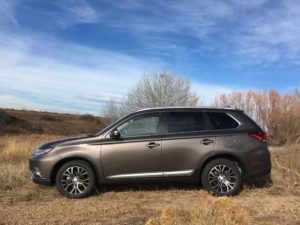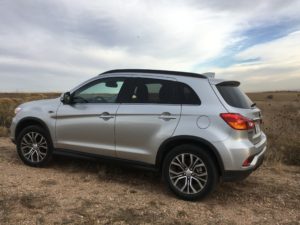
I’ve driven the 2018 Outlander GT and Outlander Sport, a couple of slow-selling crossovers for Mitsubishi, the Japanese car company hard-pressed in recent years to become the forgotten car company.
The Outlander is a midsize, the Outlander Sport is a compact; their individual sales totals, as well as the overall sales by Mitsubishi, are all near the bottom for the industry in the U.S.
Hope exists, though, as Mitsu officials will unveil what they call a rebound entry at the 2017 Los Angeles Auto Show. Shining bright in the company’s small space at the extravaganza will be a compact crossover; not only is it red but it is called the Eclipse Cross, reviving an old name from a coupe/roadster last sold in 2012.
The new Eclipse Cross will fit between the Outlander and Outlander Sport, sizewise. While all three models share a 105.1-inch wheelbase, the Outlander is 184.8 inches in overall length, the Eclipse Cross will be 173.4 inches and the Outlander Sport is 171.5.
The Eclipse was a sporty, strong-selling coupe and convertible 20 years ago, when Mitsubishi sold almost 200,000 vehicles a year, and even 10 years ago with company sales at 130,000 in the U.S. Mitsubishi expects to nudge past 100,000 sales by the end of next month.
Whether the Eclipse name can stir appeal as a crossover similar to what it did as a sports model remains to be seen.
Of Mitsubishi’s 86,000 sales over the first 10 months of this year, 55,000 of them, or 63 percent, are from the Outlander and Outlander Sport SUV crossovers. They have an even split between them.

In driving the two Outlanders, I realized how noticeably short they are of high-tech features. Traveling to Hacienda Colorado, Westminster, for a wedding reception for granddaughter Hannah Zink and Mike Mckenner, I got directions through my iPhone for lack of navigation in the Outlander.
Neither crossover offered an optional turbocharged engine. Acceleration was on the mild side; the ride was decent in the bigger Outlander, a three-row vehicle.
The new Eclipse Cross, when it hits the showrooms, will sport new styling, offer a direct-injection turbocharged engine, head-up display, touchpad controller and rear heated seats.
Performance for the Outlander GT came from a 3.0-liter V-6 engine and 6-speed automatic transmission with paddle shifters and Super All-Wheel Control. The V-6 delivers 224 horsepower and 215 lb.-ft. of torque, and S-AWC can be moved from Normal to Snow to Economical AWC or locked in all-wheel-control.
The Outlander Sport got by with a 2.4-liter, 4-cylinder, continuously variable transmission and all-wheel-control; it averaged 25.2 miles per gallon, with an EPA estimate of 23/28. The bigger Outlander, with an EPA rating of 20/27, averaged 21.9 mpg.
The addition of forward-collision mitigation, lane-departure warning and adaptive cruise pushed the Outlander’s sticker price to $34,150. The same package, plus Rockford Fosgate premium audio and panorama roof, raised price of the Outlander Sport to $29,110.
Both are built in Okazaki, Japan.